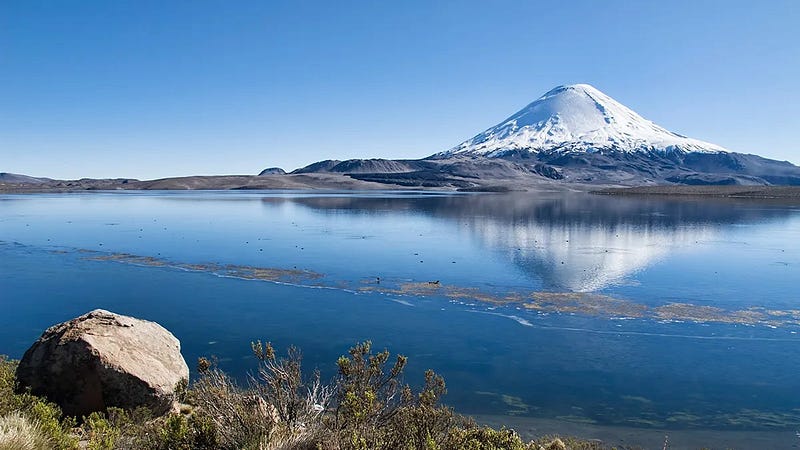The Intriguing Lifecycle of Supervolcanoes Over Millions of Years
Written on
Chapter 1: Understanding Supervolcanoes
Supervolcanoes have always sparked interest among geologists and enthusiasts alike. With the help of argon-argon dating of minute zircon and feldspar crystals, researchers have crafted a timeline detailing the buildup and eruption of four significant supervolcanoes.

While Parinacota is not classified as a supervolcano, it is situated near the cluster of volcanoes within the Oxaya Formation in northern Chile. CREDIT: Dan Lundberg/Wikimedia, CC BY-SA 2.0.
For those familiar with our community discussions, you know that Pamela and I have a fondness for volcanoes—whether it’s the fluid lava flows of Hawaii and Iceland or the dramatic eruptions of Etna and Pinatubo, as long as there’s no loss of life. Fortunately, we haven't witnessed a supervolcano eruption in our lifetimes. Nevertheless, scientists periodically remind us that we are overdue for one. On average, supervolcano eruptions occur every 20,000 years, with the last event taking place 27,000 years ago.
To alleviate concerns, researchers are examining various characteristics of past supervolcano eruptions to understand their frequency better and to identify potential warning signs.
Section 1.1: The Research Breakthrough
In a recent publication in Nature, a research team presented their findings on the analysis of tiny zircon and feldspar crystals from four notable eruptions in northern Chile. By employing argon-argon dating techniques, the scientists discovered that these crystals originated from large underground plutons that cooled gradually until magma infiltrated through weaker areas. This granite subsequently fragmented and remelted, pooling in vast underground lakes before erupting dramatically and forming expansive calderas.
Subsection 1.1.1: Timeline of Events
The entire process initiated over four million years before the earliest eruption of the four studied. This long cooling period allowed the granite ample time to solidify slowly. However, the melting and pooling of magma occurred in a remarkably short timeframe—potentially spanning just years to decades.
Section 1.2: The Cycle of Eruption
Post-eruption, the cycle recommences, with magma accumulating to form another pluton over millions of years, eventually leading to fragmentation, remelting, lake formation, and subsequent explosive eruptions. The most recent of these four eruptions took place 19.6 million years ago.
Chapter 2: Future Outlook
Currently, there are no definitive indicators suggesting that any known supervolcanoes worldwide pose an imminent threat. However, this research provides valuable insights into one of the potential processes that geologists will monitor moving forward.
The first video, "How Super Volcanoes Form (And Why)," delves into the formation mechanisms of supervolcanoes, offering a visual understanding of these massive geological structures.
The second video, "How to make a volcano: A super quick and easy project," provides a fun and simple approach to creating a model volcano, illustrating basic volcanic concepts.
More Information
For additional details, consider reading:
- "Supervolcanoes Linger a While, Then Rush to Erupt" (Eos)
- "Timescales for pluton growth, magma-chamber formation, and super-eruptions," M. E. van Zalinge et al., August 3, 2022, Nature.
This piece was originally crafted for the Daily Space podcast and YouTube series. For more updates from Dr. Pamela Gay, Erik Madaus, and myself, visit DailySpace.org.